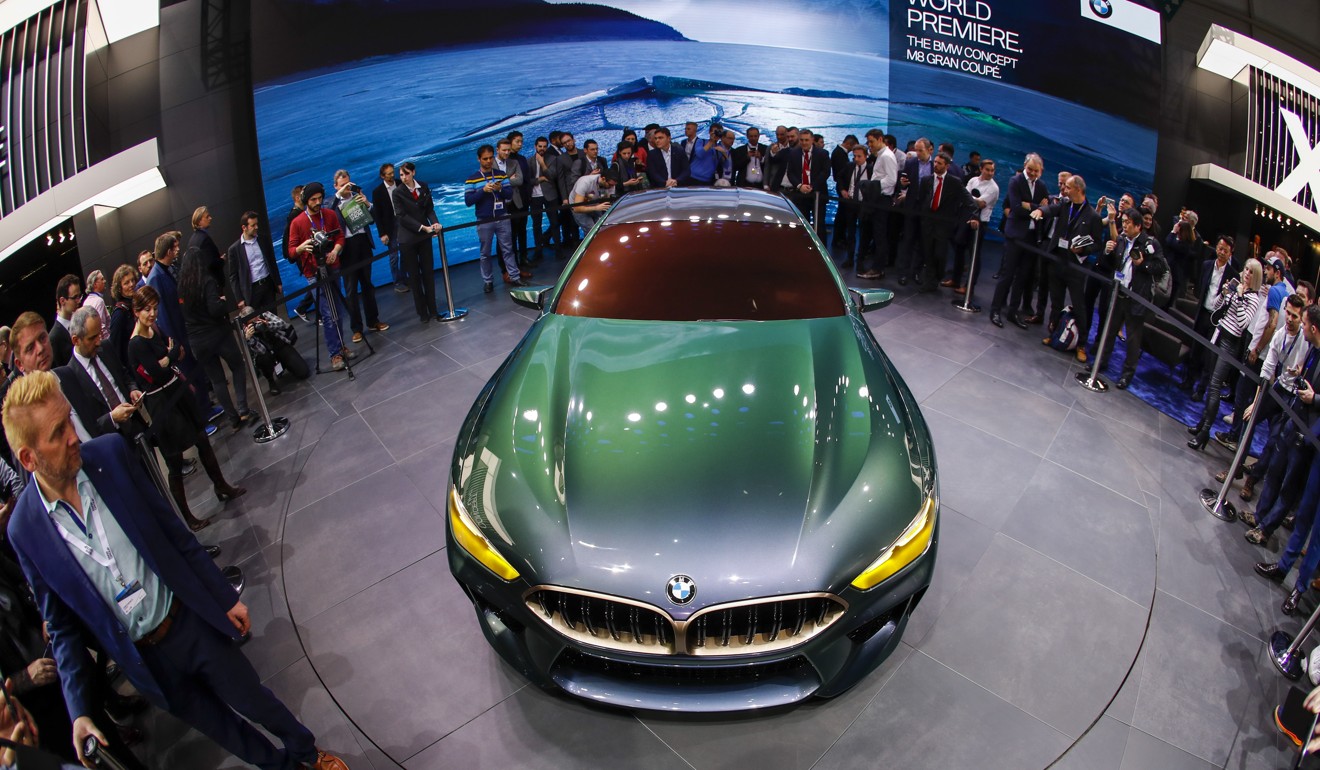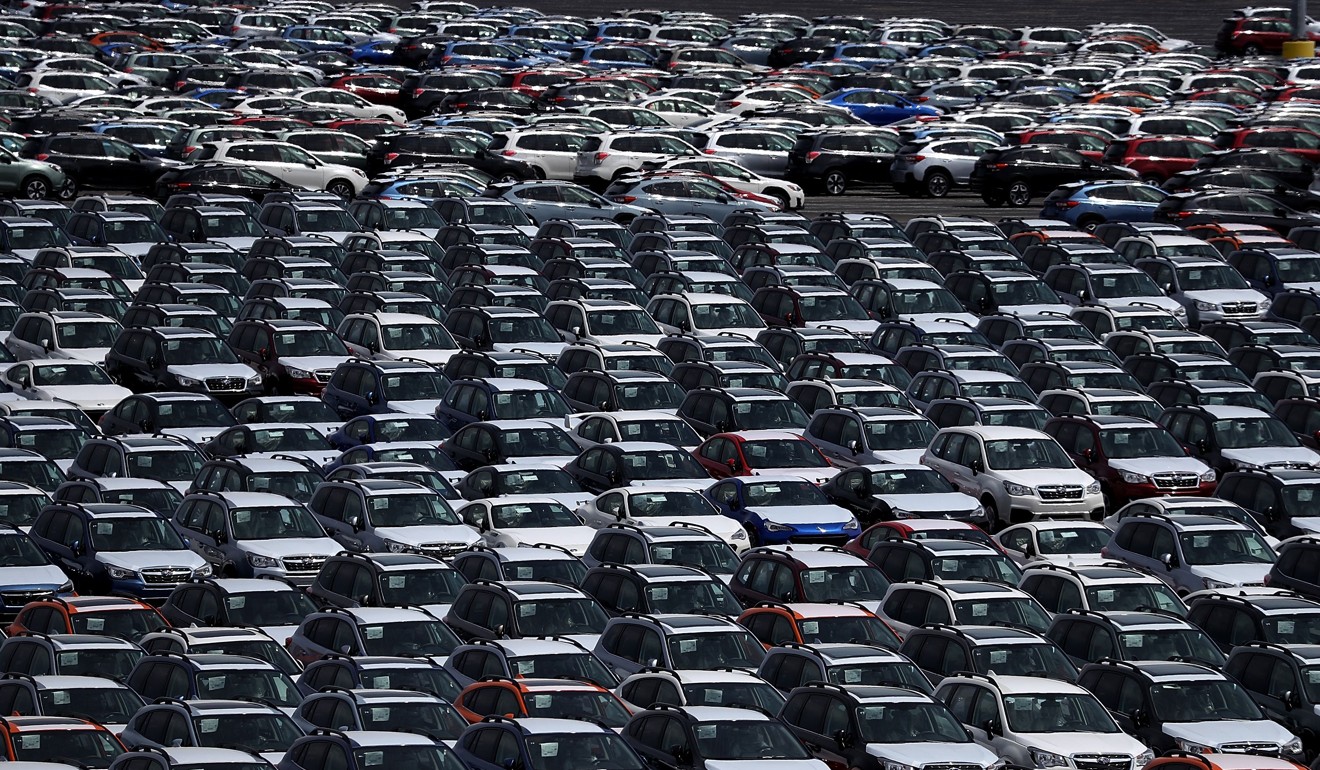
Trump’s myopic trade agenda to protect the US car industry will cost the economy dearly
The US car industry may have generated US$100 billion in sales and 7.3 million jobs in 2017, but the advantages of the services sector that employed 90 million people and generated US$230 billion remain politically uncounted and ignored
Have you noticed how much time and attention trade negotiators pay to the car industry? How so much of the smouldering stress and arm-wrestling around negotiations converges on cars and car parts?
Yes, they account for a big share of global goods trade – around 9 per cent of all merchandise trade, according to the World Trade Organisation. And yes, this trade concentrates on a small number of very important economies like the US, Japan, Germany.

But surely the attention is out of all proportion to the importance of the car business in our overall global economy two decades into the 21st century? As a correspondent in the US’s Atlantic magazine eloquently put it, surely it is all about “pistons and brute force in an era of silicon and software”?
Trump’s “America First” trade agenda seems to be all about the motor industry – whether in the Korus trade deal with South Korea, in the US trade conflict with Germany, in efforts to secure a Japan FTA, or, most nail-bitingly in the renegotiation of the 24-year-old North American Free Trade Agreement (Nafta) into a shiny new US-Mexico-Canada Agreement (USMCA).
It is true that lots of the scrummaging over a new Nafta deal was over softwood timber and Canada’s meticulously protected dairy sector, but nothing compared with the animus over autos. It is hard to imagine the nit-picking that must go into making sure that the local content value in a car rises from 62.5 per cent to 75 per cent or that between 40-45 per cent of the workers employed earn at least US$16 an hour. But it must surely be marvellous for jobs in customs inspection.
Obviously, there is bias among old-school lawyers who have spent lifetimes protecting industries like steel, aluminium and cars, and clearly there are many in the US workforce who share this bias – after all the US car industry in 2017 generated around US$100 billion in sales, employed 954,000 people directly and an estimated 7.3 million jobs if the car dealers, repair workshops and spares producers are added in.

According to the US Auto Alliance, cars account for more than 3 per cent of national GDP. “A robust automotive manufacturing sector is vital to a healthy US economy,” it says.
But there is more than this. Since the first Model T Ford rolled off the production line exactly 110 years ago at the Piquette Avenue plant in Detroit, cars have stood as a symbol of US manufacturing prowess.
As the German, Japanese and South Korean car industries have grown in the US’s wake, so these too have come to see cars as symbolic of global manufacturing leadership. Links with defence industries have always been strong, so there is an emotional linkage for some with national security.
Doubtless that is why China has invested such massive financial and emotional energy into building its car industry. While its car industry remains dominated by foreign brands like Volkswagen, Toyota, Ford, GM and Hyundai, home-grown brands have become significant and China itself has become by far the world’s largest market: it produced around 29 million vehicles last year, compared with around 11 million in the US.
For Canada and Mexico, throwing China under bus was no-brainer
But for the Trump team and the core that supports him, there is something deeper than manufacturing prowess and national security. For many Americans even today the car is a powerful symbol of freedom, independence and individual expression, a portable private space within which American teenagers over the past century have forged their personalities.
As the Historic Vehicles Association notes: “Cars have come to define much of what it means to be an American.”
Road novels like Jack Kerouac’s On the Road, John Steinbeck’s Travels with Charley and Robert Persig’s Zen and the Art of Motorcycle Maintenance have since the 1950s put the car at the heart of American life. Road films from Easy Rider, Road Rage, the Fast and Furious series – and even Driving Miss Daisy – have a prominent place in Hollywood’s history.

National car brands are among the most deeply felt foundations of national pride – whether it is Ford and Chevrolet in the US, or BMW and Mercedes in Germany, Toyota in Japan, or Jaguar and Rolls-Royce in the UK. I remember so clearly my father’s ferocious dismissal of Japanese and European cars as they first began to appear in the UK. It was a deeply felt national pride that kept my father loyal to British car brands even after they had almost all been taken over by foreign car makers.
So it seems in America today, with patriotic angst fuelled by the crash in the national car market in the wake of the 2008 global financial crash, and the crushed pride of so many communities that had until then thrived on the nation’s motor industry. It is not a coincidence that Trump’s core still dominates these “rust belt” communities, a proud American middle class whose dignity has been profoundly injured and still seeks repair.

It must also be an affront to this core to see that the world’s biggest car plant, in Georgetown, Kentucky, is run by Toyota, and that the US’s main car exporters – at the heart of the panic over potential lost car sales to China – are not American car makers, but BMW and Mercedes.
Trump is not the first to give disproportionate attention to this iconic symbol of 20th century industrial strength – remember Barack Obama’s US$3 billion “Cash for Clunkers” scheme to aid economic recovery after the 2008 crash? He will also surely not be the last.
But as a symbol of pistons and brute force in an age of silicon and software, cars embody a sobering reminder: while autos account for 9 per cent of global merchandise trade, the 21st century growth is in IT and services. The US car industry may account for over 7 million jobs, but services account for 90 million.
The US may suffer a trade deficit in goods, but its fast-growing surplus in the export of services, which sat last year at US$230 billion, remains politically uncounted and ignored. There will in due course be a price paid for resting trade strategy on the car-culture dreams of the 1960s.
David Dodwell researches and writes about global, regional and Hong Kong challenges from a Hong Kong point of view

